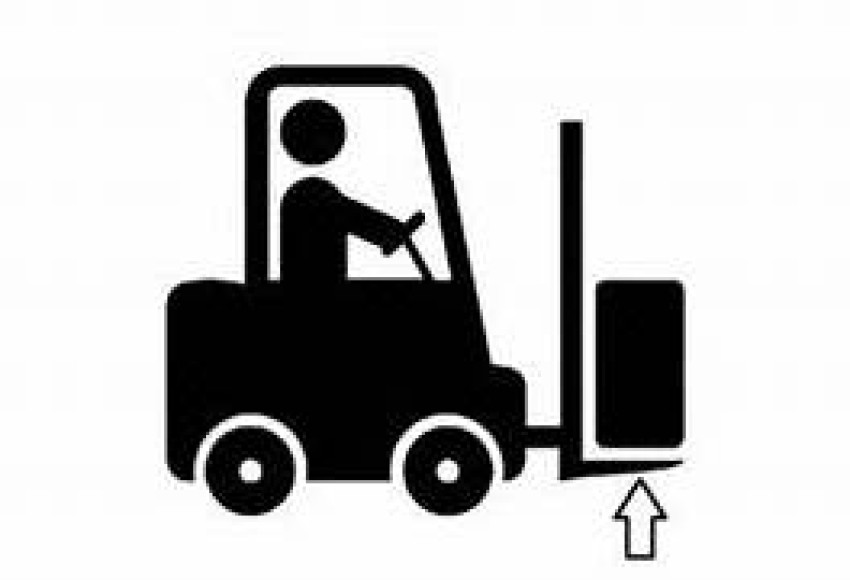
To calculate the capacity of a forklift, you need to consider a few factors such as load center, load weight, load distribution, and forklift specifications. Here is a general method for calculating forklift capacity:
1. Determine the Load Center: The load center is the distance from the face of the forks to the center of gravity of the load. It is typically measured in inches or millimeters and is specified by the manufacturer for different forklift models.
2. Identify the Load Weight: Determine the weight of the load you intend to lift using a weighing scale or referring to the load documentation. Make sure to include the weight of any attachments or accessories being used.
3. Determine the Load Distribution: The load distribution refers to how the weight is distributed on the forks. It can affect the stability of the forklift and its lifting capacity. The load should be evenly distributed on the forks for safe lifting.
4. Check the Forklift Specifications: Refer to the forklift's specification plate or manual to find the rated capacity of the forklift. The rated capacity is typically listed for different load centers. Make sure to use the correct load center measurement for your calculation.
5. Apply the Capacity Calculation Formula: The formula for calculating the safe lifting capacity of a forklift is as follows:
Safe Lifting Capacity = Maximum Load Moment / Load Center Distance
The maximum load moment is the product of the load weight and the load center distance. The load center distance should be converted to the same unit as the load weight (e.g., inches or millimeters).
6. Obtain Training and Certification: To operate a forklift in Canada, it is essential to receive proper training and certification from a recognized forklift training centre. Seek a reputable training center that provides Canadian forklift certification courses. These courses cover the safe operation of forklifts, including load capacity calculations, handling techniques, and safety protocols.
7. Conduct Regular Maintenance and Inspections: To ensure the safe operation of a forklift and accurate capacity calculations, it is important to regularly maintain and inspect the forklift. Follow the manufacturer's guidelines for maintenance, including regular inspections of the lifting mechanism, tires, brakes, and other crucial components. Any defects or issues should be addressed promptly.
8. Consider Environmental Factors: Keep in mind that environmental factors can affect the forklift's capacity and stability. Factors such as floor surface conditions, inclines or slopes, and obstacles in the operating area can impact the safe lifting capacity. Always assess the operating environment and make any necessary adjustments to ensure safe operation.
9. Follow Load Handling Guidelines: It is important to follow proper load-handling techniques when operating a forklift. Ensure that the load is secured, stable, and properly positioned on the forks. Avoid exceeding the forklift's rated capacity, as it can compromise safety and stability.
10. Renew and Update Certification: Forklift operators in Canada should renew and update their certification periodically, as required by regulations or recommended by the training center. Keeping up with the latest safety practices, regulations, and techniques through refresher courses can enhance operator competence and maintain a safe work environment.
11. Understand Load Stability: In addition to calculating forklift capacity, it is important to consider load stability. Assess the dimensions and stability of the load to determine if it can be safely lifted and transported by the forklift. Unstable or improperly balanced loads can increase the risk of accidents and tip-overs.
12. Account for Attachments: If you are using any attachments on the forklift, such as side shifters or clamps, take their weight and dimensions into account when calculating the capacity. The added weight and load center of the attachments can affect the forklift's overall capacity and stability.
13. Seek Professional Assistance if Needed: If you are unsure about calculating forklift capacity or have specific requirements for your workplace, consider consulting a professional, such as an engineer or a forklift specialist. They can provide guidance and assistance in determining the appropriate capacity for your specific lifting tasks.
14. Follow Safety Regulations and Best Practices: Ensure that you are familiar with and adhere to all applicable safety regulations and best practices when operating a forklift. This includes wearing appropriate personal protective equipment (PPE), observing speed limits, maintaining clear visibility, and avoiding unauthorized personnel in the operating area.
15. Continuous Training and Skill Development: To enhance forklift operation skills and maintain safety standards, consider participating in ongoing training and skill development programs. These can include refresher courses, advanced training, and staying updated with the latest industry practices.
This information provides a general overview of calculating forklift capacity and obtaining certification in Canada. It is always crucial to consult specific regulations, manufacturer guidelines, and training requirements to ensure compliance with the most up-to-date standards and best practices in your region.



